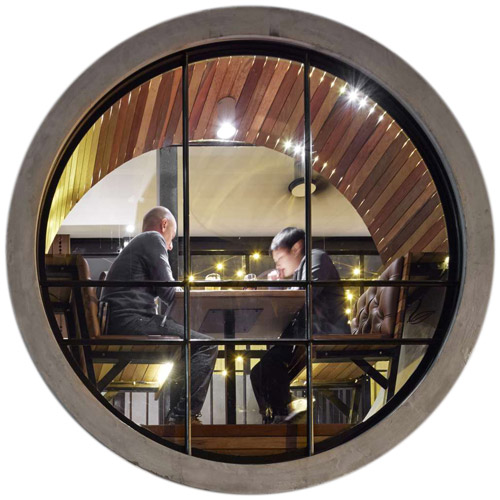Call for Papers for Issue No. 5:
“NATURAL AND BUILT ENVIRONMENT - Role of ecological indicators”
Research Fields
Architecture Urban Planning Urban Design Urban Sociology Urban Ecology Environmental impact Environment Engineering
Themes
With the aim of assessing the environmental impact of products or services, different methods are used in the construction industry, with different indicators. The basis is a defined perspective framework within which the inputs and outputs are quantified. Depending on the method, one or more indicators are displayed. The sustainability certification systems for buildings (especially BNB, DGNB) and environmental product declarations (EPDs) promoted the dissemination of ecological characteristics in construction. However, in many cases, it remains the case when the resources and emissions associated with the product are identified. An examination in the early planning phase is also complex and the actual potential of these methods - reduction of environmental influence by the construction industry - remains under its possibilities.Description
The complexity of urban areas results from their spatial heterogeneity, their intertwined material and energy fluxes, and the integration of social and natural processes. All of these features can be altered by intentional planning and design. The complex, integrated suite of urban structures and processes together affect the adaptive resilience of urban systems, but also presupposes that planners can intervene in positive ways”. (Pickett, S.T.A. et. Al. (Eds.), 2013)1
 Photo: Peter Clarke
Photo: Peter ClarkeAs an immediate effect to the oil crisis, the topic of energy efficiency shaped the building construction, especially the typology of facades and windows. The need to preserve heat within the building added another layer and insulation became a new mass product for building envelopes. Now the building sector is looking at 2020s nearly zero energy standard. Architects and planner design buildings which need no not-renewable energy for operation and are free of emissions. Being able to tackle this, the attention was drawn to the field of resources. If a building needs zero (not-renewable) energy for operation, its ecological quality is defined by the building substance. Embodied energy/emissions have shown to be a sufficient instrument to communicate the amount of energy that buildings (neighbourhoods and cities) store. The three strategies Sufficiency, efficiency and consistency (Heger et al., 2007)2 used within the attempt to decrease energy for operation are common paths to control the impact linked to the building substance. Resource efficiency was proclaimed a follow-up to energy efficiency. (“The earth is energy-open system, but limited in its resources.” Z. Kahn, 2011) Using less resources and more renewable ones seem not to solve the future needs as still a great amount of products end without function as waste. The concept of circular economy addresses this by proclaiming endless use divided in technical and biological cycles based on the Cradle to Cradle principles (Braungart et al., 2002)3. This approach includes in the economic sector and encourages the shift from owning products to using services. This integrates well in the increasingly more visible idea of sharing on the background of growing information management systems.

In the last 30 years the building industry came up with a broad variety of ecological indicators with different national emphasis. This issue addresses the methods to quantify ecological impact, its application in built examples and their vision.
The special issue of Creativity Game – Theory and Practice of Spatial Planning journal titled "NATURAL AND BUILT ENVIRONMENT- Role of ecological indicators" encourages contributions, that:
- Discuss resource use in the built environment,
- Instruments and methods to indicate the impact/benefits for the environment from resources,
- Reuse and recycling application,
- Information management systems to support circularity in the built environment,
- Deconstruction techniques that contribute to higher ecological value of material,
- Research impact on the air and water use by adopted and future building technologies and design,
- Environmental impacts assessment on construction sites,
- Offers insight on building lifespan and the relationship between building age and their environmental impact,
- Explores green building technologies and building design,
- Researches topics on sustainability and resilience in urban design; practice and theory / on-site experience and design theory,
- Adaptation of buildings to climate change scenario and
- Concepts and platforms for building material (primary or used) to benefit natural resources.
1 Pickett, S.T.A. et.al. (Eds.), (2013). Resilience in Ecology and Urban Design: Linking Theory and Practice for Sustainable Cities. Series: Future City, Vol. 3. Springer.
2 Hegger, M., Fuchs, M., Stark, & Zeumer, M. (2007). Energy Manual. Munich: Birkhäuser Architektur.
3 Braungart, M., & Mc Donough, W. (2002). Cradle to Cradle: Remaking the Way We Make Things. New York: North Point Press.
Manuscript Submission
The deadline for submitting articles wasDr. Linda Hildebrand, jun. Prof., lhildebrand(at)rb.arch.rwth-aachen.de or info@rb.arch.rwth-aachen.de
Further information, including submission procedures and advice on formatting and preparing your manuscript, can be found at: http://www.iu-cg.org/en/authors.html or in attached links bellow.
1 MANUSCRIPT REGISTRATION FORM .docx Word file
2 MANUSCRIPT INSTRUCTIONS IN PDF FORM PDF file
3 TEMPLATE FOR SCIENTIFIC AND PROFESSIONAL MANUSCRIPTS .doc Word file - 0,5 MB / .odt file - 0,5 MB
Editors of the Issue
Dr. Linda Hildebrand, jun. Prof.RWTH Aachen University, Faculty of Architecture, Templergraben 83, 52062 Aachen, Germany
Assist. Janez P. Grom
University Of Ljubljana, Faculty Of Architecture, Zoisova c. 12, 1000 Ljubljana, Slovenia
Scientific Committee
Prof. Dr. Tillmann KleinTechnische Universiteit Delft (TUD), Mekelweg 2, 2628 CD Delft, Netherlands
Prof. Dr. Saja Kosanović
University of Priština in Kosovska Mitrovica, Faculty of Technical Sciences, Department of Architecture
Date of Submission for Publication of the Entire Issue
All contributions will be rigorously peer-reviewed according to the guidelines and standards of the IGRA USTVARJALNOSTI(IU) – teorija in praksa urejanja prostora / CREATIVITY GAME (CG) – Theory and Practice of Spatial Planning. Manuscripts are due onNotice about manuscript submission: until 1st June 2017.
Submission of manuscripts by authors:
Peer-review Completion: August 2017.
Revision/Revised submission by authors: end of August 2017.
Submission of finally approved articles to the editorial office: 1st September 2017.